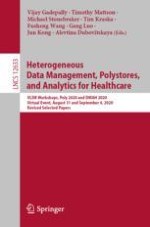2021 | Buch
Heterogeneous Data Management, Polystores, and Analytics for Healthcare
VLDB Workshops, Poly 2020 and DMAH 2020, Virtual Event, August 31 and September 4, 2020, Revised Selected Papers
herausgegeben von: Prof. Dr. Vijay Gadepally, Timothy Mattson, Michael Stonebraker, Tim Kraska, Fusheng Wang, Gang Luo, Jun Kong, Alevtina Dubovitskaya
Verlag: Springer International Publishing
Buchreihe : Lecture Notes in Computer Science
